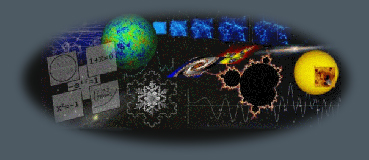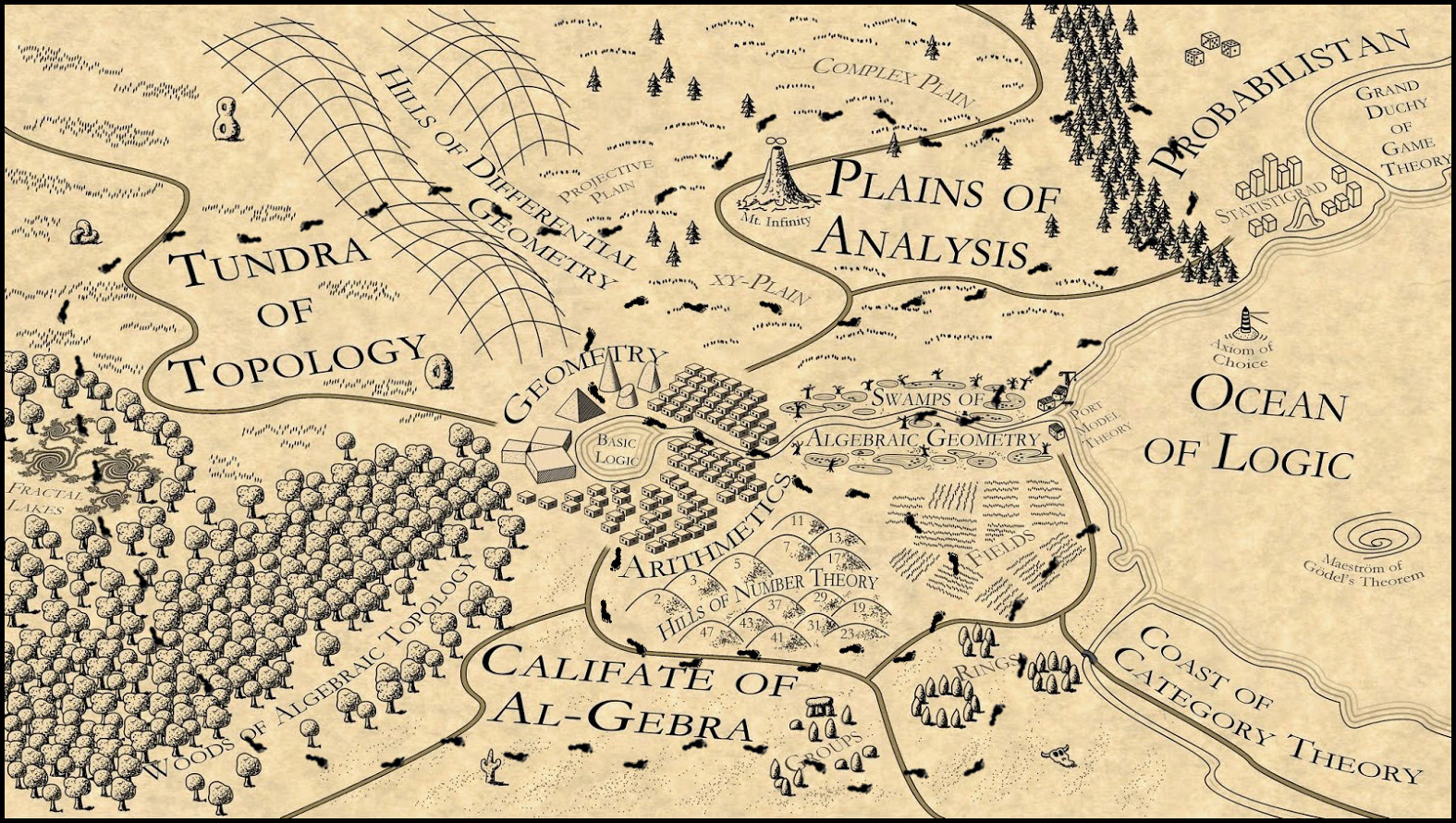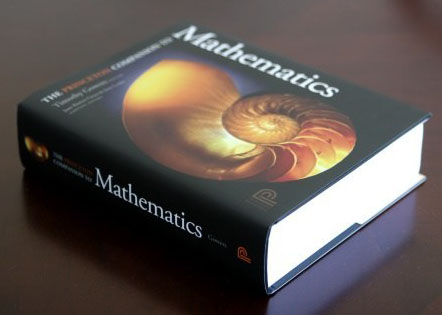-





-
Mathematical Wanderings is a book project that started during a math lecture. I was trying to come up with an interesting problem in a not so interesting part of the course, calculating with percent and permille etc. The problem I came up with turned out to be a very fruitful problem that led to more difficult problems that could challenge the class. The problems given to the class are presented under STARTER in the menu bar.
A hard problem they had to deal with was this:
0.xyz........ (x,y,z,... are decimal digits)
0.00xyz......
+0.00000xyz...
0.99999999...
Is there any digit sequence xyz... that makes the addition true and if so, present such a sequence.
If you try to solve this by trial and error, putting in digits and adjusting you will find it quite a challenge. It's a type of problem that can be translated to another setting, solved there quite easily and then translated back to the original setting where the solution is much harder to find. The trick is to formulate an equation and work with fractions instead of decimal representations and finally use long division to get back to a decimal representation.
The solution to the problem is a sequence that repeats indefinitely. The sequence is 990089207...900000 with 16625 seemingly random digits in between. The students, even those that had shown no prior interest in maths where quite fascinated when I presented the sequence in a printout, 1.25 m long.

The concept of translating a problem from one domain of mathematics to another domain where the two seemingly different domains turn out to be deeply connected is a very powerful method often used in modern mathematics. It's used with dualities in super string theory and in the Langlands program where number theory and geometry are connected via Galois groups, automorphic forms and representation theory. The Langlands program has been called the "grand unified theory of mathematics"
Our more mundane problem is not as innocent as it looks. It starts with fractions in decimal form and leads to questions about the length of the repeating sequence. The reptend length of p/q can be deduced from reptend lengths of the inverted primes in the prime decomposition of q. Only primes need to be considered when exploring the period of fractions.
Prime (p) 1/p Period (1/p) 2 0.5 0 3 0.3 1 5 0.2 0 7 0.142857 6 11 0.09 2 13 0.076923 6 17 0.0588235294117647 16 Prime numbers with a maximal reptend length (p−1) such as 7,17,19,23,29,47,59,... are called full reptend primes. The correspondig list when numbers are expressed in base 2 is: 3,5,11,13,... . How common are full reptend primes? Artin's conjecture on primitive roots ([1], [2], [3]) states that for most bases the fraction of full reptends among the primes approaches a well defined number:

Artin's conjecture from 1927 is still unresolved. In 1967 it was proved assuming the generalized Riemann hypothesis to be true. The Riemann hypothesis is one of the most important conjectures in mathematics with close links to the distribution of prime numbers.
It was 2015 and near the end of my teaching contract. I was looking forward to do something else and was taken over by the idea to explore the mathematics of reptend lengths and Artin's conjecture and put it all in a book. This would let me spend time and learn more about many areas of maths, keep me away from the troubles of the classroom and do something for kids that had a real interest in maths and show them a glimpse of the world of mathematics beyond the school books.
When the teaching period was over I went to Africa for safari with amazing wildlife scenery and a week in Zanzibar. After Africa it was time for a smaller project, the timelines project; a chronological presentation in Excel of people and projects of science. Now it was time for the book project.
Every book has a front page with title and image. These should reflect the content of the book. My book was to be about the world of mathematics. The title of the book "Mathematical Wanderings, from the simple to the more advanced" is an allusion to the Greek epic describing Odysseus long and erratic journey home from the Trojan War. During the journey he visits many strange and interesting places. The world of mathematics has several branches with subparts that blend seamlessly into a complex landscape with surprising connections between different areas.

I did not have aspirations of publication so when I saw a good illustration that could be used in the book it became part of the book without considerations of ownership of images. A more realistic idea that I did consider was to have a few copies printed like a real book for my own ego.
It seemed like every piece of interesting math deserved a place in the book. At the time I was reading a true masterpiece "The Princeton companion to Mathematics", a book that summed up much of modern mathematics. I just had to include a big dose of modern mathematics in the form of symmetry, group theory and the continuous version with Lie Groups and Lie Algebras.

Another inspiring piece I stumbled upon at the time was a youtube series in 21 parts about huge numbers. It describes numbers of ever increasing size. The topic of naming the biggest number would surely interest many students with a mathematical interest. It leads to questions about the fundamentals of mathematics and branches that deal with ordinal and cardinal numbers, axiomatics and set theory, proof theory and model theory.
These topics and others should be included in a series of boxes that progress and mingle with the rest of the text. The symmetry part starts with a box about sphere packing, several boxes later when the ground was prepared it would end with classification of simple groups like the monster group, classification of Lie groups with Lie Algebras like E8 and finally the Leech lattice.
Ambitions seemed to grow with the project. I have taken many courses for my own amusement and interest at some cost for society at large but I have never given back in the sense of teaching about the material or doing research based on it. The book could be a chance to popularize and present what I had studied to interested students. There are many topics that I would have liked to take a course in but where no courses were available. The book would be a way to study on my own with the goal of writing about physics subjects such as supersymmetry, string theory and loop quantum gravity and math subjects such as algebraic geometry and the Langlands program.
All of this would not fit into one book, it would be a series of books with an extra book containing solutions to problems that where given after each chapter. By now it should be obvious that the ambitions had swelled beyond every reasonable limit. When I had written 440 pages and four chapters, maybe a third of the book I took a pause. It was high time for some paying work. After a year of teaching 2018-2019 it was time to lay the book project to rest and present the uncompleted work from 2015-2018 on PMprojects.net:
Frontpage
Preface
Contents
Chapter 1: Introduction
Chapter 2: Origins
Chapter 3: Basics part 1
Chapter 3: Basics part 2
Chapter 4: Return
Appendix A: Exercises
Appendix B: Hints
Appendix C: Extensions
Appendix D: Timelines
Appendix E: Notes
Appendix F: Programs
Appendix G: Internet
Appendix H: Books
Appendix I: Greek letters
Appendix J: Symbols
Appendix K: Gray boxes
Appendix L: Biographies
Index
Backpage
Problems and Solutions
